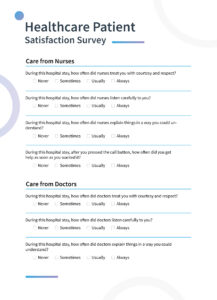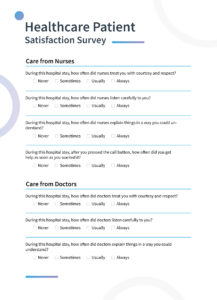Employing a pre-designed structure offers numerous advantages. It minimizes the risk of errors or omissions that might delay processing. Furthermore, it empowers individuals to exercise their right to access their own health information with ease and confidence. This streamlined approach benefits both patients and healthcare providers by reducing administrative burdens and ensuring clear communication. Ultimately, it contributes to improved patient care through better information access and informed decision-making.
This article will further explore the components of a well-designed form, legal considerations surrounding access to medical records, and best practices for submitting requests. Practical examples and resources will be provided to guide individuals through the process of obtaining their health information effectively.
Key Components of a Medical Records Request Form
Effective requests for medical records hinge on several key components that ensure clear communication and efficient processing. These elements facilitate accurate retrieval of the required information while adhering to privacy regulations and established procedures.
1. Patient Information: Complete and accurate patient demographics are essential. This includes full legal name, date of birth, current address, phone number, and any previous names used.
2. Identification Verification: A mechanism for verifying the requester’s identity is crucial for protecting patient privacy. This might include a copy of a driver’s license, passport, or other government-issued identification.
3. Specific Records Requested: Clearly specifying the required records is vital for efficient processing. This includes dates of service, types of records (e.g., lab results, physician notes, imaging reports), and the specific information sought.
4. Delivery Method: The preferred method for receiving the records should be indicated, whether electronic copies, physical copies, or access through a patient portal. Contact information for delivery purposes, if different from the patient’s, should also be provided.
5. Authorization: A signature authorizing the release of information is mandatory, along with the date of the request. If the request is made by a representative on behalf of the patient, appropriate documentation, such as a power of attorney, must be included.
6. Contact Information for the Healthcare Provider: Clearly identifying the healthcare provider or facility holding the records is essential. This includes the name, address, phone number, and fax number, if applicable.
Accurate provision of these elements ensures that requests are processed promptly and accurately, facilitating timely access to necessary medical information. Complete and well-structured requests minimize delays and reduce administrative burden for both patients and healthcare providers.
How to Create a Medical Records Request Form
Creating a standardized form for requesting medical records promotes efficiency and clarity in the retrieval process. Careful consideration of key components ensures comprehensive requests that meet regulatory requirements and facilitate timely access to health information.
1. Template Selection: Begin by selecting a suitable template. Several reputable sources offer free, downloadable templates. Alternatively, one can create a template from scratch using a word processing application.
2. Patient Information Section: Designate a section for complete patient demographic information. Fields should include full legal name, date of birth, current address, phone number, and any previous names used.
3. Identification Verification: Incorporate a mechanism for verifying the requester’s identity. This can involve requesting a copy of government-issued identification or other secure verification methods.
4. Record Specification: Include fields for detailed specification of the requested records. This should encompass dates of service, specific types of records (e.g., progress notes, lab results), and the specific information sought.
5. Delivery Method Options: Provide options for specifying the preferred delivery method, such as electronic copies, physical copies, or access via a patient portal. Include fields for alternate delivery contact information if necessary.
6. Authorization and Signature: Include a designated space for the patient’s signature, authorizing the release of information, along with the date of the request. Provisions for representative authorization should also be incorporated.
7. Provider Information: Dedicate a section for providing the contact information of the healthcare provider or facility holding the records. This should include the name, address, phone number, and fax number, if applicable.
8. Review and Refinement: Thoroughly review the drafted template for clarity, completeness, and compliance with applicable regulations before implementation. Regular review and updates ensure ongoing effectiveness and relevance.
A well-designed template facilitates clear communication between patients and healthcare providers, ensuring efficient processing of requests and timely access to vital medical information. Regular review and updates of the template help maintain its effectiveness and compliance with evolving regulatory standards.
Access to personal health information is a fundamental patient right. Standardized forms provide a crucial mechanism for exercising this right efficiently and effectively. Utilizing structured templates ensures comprehensive requests, minimizes processing delays, and promotes clear communication between patients and healthcare providers. Key components of these templates include detailed patient identification, specific record identification, delivery preferences, and appropriate authorization. Careful design and regular review of these forms contribute significantly to streamlined information exchange and empowered patient care.
Facilitating seamless access to health information is essential for informed decision-making and active participation in one’s own healthcare journey. Promoting the widespread adoption of standardized request procedures empowers individuals and strengthens the patient-provider relationship. Continued efforts to refine and improve these processes will further enhance patient autonomy and contribute to a more transparent and efficient healthcare system.


